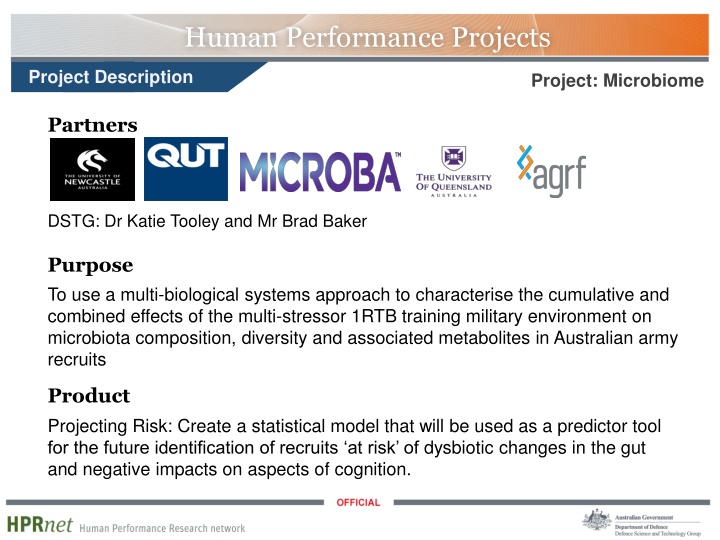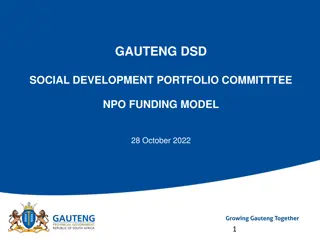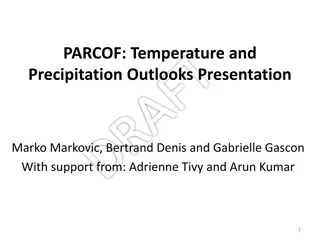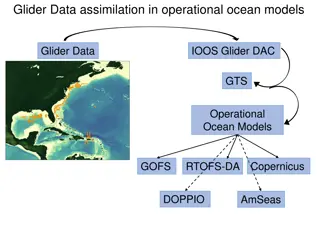Medicaid Funding Sources and Budget Forecasting Process
The Department for Medicaid Services relies on various funding sources such as state funds and federal funds for its budget. The benefits budget includes FFS payments, managed care, NEMT, Medicare premiums, and more. Medicaid is a joint federal-state program, funded by state and federal funds with different match percentages. The benefits budget forecasting process involves consensus forecasting using historical data and various models to estimate expenditures. This process includes univariate and multivariate time series models to project MCO spend and enrollment.
Download Presentation

Please find below an Image/Link to download the presentation.
The content on the website is provided AS IS for your information and personal use only. It may not be sold, licensed, or shared on other websites without obtaining consent from the author.If you encounter any issues during the download, it is possible that the publisher has removed the file from their server.
You are allowed to download the files provided on this website for personal or commercial use, subject to the condition that they are used lawfully. All files are the property of their respective owners.
The content on the website is provided AS IS for your information and personal use only. It may not be sold, licensed, or shared on other websites without obtaining consent from the author.
E N D
Presentation Transcript
Human Performance Projects Project Description Project: Microbiome Main issues Partners DSTG: Dr Katie Tooley and Mr Brad Baker Purpose To use a multi-biological systems approach to characterise the cumulative and combined effects of the multi-stressor 1RTB training military environment on microbiota composition, diversity and associated metabolites in Australian army recruits Product Projecting Risk: Create a statistical model that will be used as a predictor tool for the future identification of recruits at risk of dysbiotic changes in the gut and negative impacts on aspects of cognition.
Human Performance Projects Path to Impact Project: Microbiome Main issues What we have learnt so far? Preliminary analysis from approx. 60 recruits undergoing Basic Army Training Significant changes in dietary intake, self-reported stress and sleep quality markers, cognitive performance (i.e. executive function, spatial planning) and microbiota diversity and composition over the 11 weeks. Significant associations between alpha- and beta-diversity and microbial species and several cognitive subdomains of executive function (multi- tasking). What does that mean for ADF capabilities? 1. Preliminary findings suggest significant shifts in microbiota composition following military stressors 2. Microbiota diversity and specific species appear to be associated with aspects of cognition, especially executive function 3. Lead to evidence-based data for the future development of microbiota targeting interventions as novel, low-cost strategies for preserving the pre-stressed microbiota and optimizing warfighter s cognition (or aspects of) and well-being.
Human Performance Projects The Science Project: Microbiome Main issues Significant impact from COVID that has led to delays in recruiting. Enrolled 189 recruits in 2021 and 2022 148 completed Week 5 testing 125 completed Week 11 testing Findings: Cognitive Performance In Week 1: Poorer Executive Function Poorer Memory Function Better Attention and Psychomotor Speed Nutrition Self-reported Assessments In Week 1: Lower dietary intakes (specifically carbohydrates) compared to MRDI In Week 1: Higher perceived stress and poor sleep quality
Human Performance Projects The Science Project: Microbiome Main issues Microbiota Findings: Oral Microbiota Gut Microbiota Significant differentiation of beta diversity at the week 11 time point, with an enrichment of numerous Streptococcus species A small number of species appear to have strong statistical associations with numerous cognitive subdomains of executive function Alpha diversity Beta diversity Alpha diversity - significant decrease over time Beta diversity- increase in similarity of microbial composition over time























